SAM-e: A Natural Mood Booster
Introduction
Sometimes your mood feels heavy for no clear reason — your energy drops, motivation fades, and even small tasks feel overwhelming.
If that sounds familiar, your brain chemistry may need a gentle reset.
That’s where SAM-e (S-adenosylmethionine) comes in — a natural compound your body already makes to support emotional well-being, energy, and focus.
Unlike synthetic antidepressants, SAM-e works by enhancing your body’s own mood-regulating chemistry — helping neurotransmitters like serotonin, dopamine, and norepinephrine do their job more efficiently.
In this in-depth guide, we’ll explore what SAM-e is, how it works, what science says about its mood-boosting power, and how to use it safely for lasting emotional balance. 🌙
Looking for supplements for This? Click here.
🧬 What Is SAM-e?
SAM-e (pronounced “sam-ee”) is short for S-adenosylmethionine, a naturally occurring molecule made from the amino acid methionine and ATP (adenosine triphosphate) — the body’s main energy molecule.
It’s present in every cell and involved in over 100 biochemical reactions, especially those related to:
Mood regulation (neurotransmitter synthesis)
Detoxification (liver function)
Cell membrane health
Methylation (gene expression and DNA repair)
Simply put: SAM-e helps your brain and body communicate better — ensuring the chemical messengers that govern your emotions work smoothly.
🌿 SAM-e and the Chemistry of Mood
Your emotions depend on how well your brain produces and balances neurotransmitters — particularly serotonin, dopamine, and norepinephrine.
SAM-e supports this by donating methyl groups, chemical units that help your brain make these vital mood molecules.
🧠 Boosts Serotonin
Serotonin stabilizes mood and promotes calm.
Low serotonin can lead to irritability, worry, or emotional numbness.
SAM-e increases the activity of serotonin-synthesizing enzymes, helping restore emotional balance.
⚡ Enhances Dopamine and Norepinephrine
These two neurotransmitters control motivation, energy, and focus.
Low levels often show up as fatigue, brain fog, or loss of pleasure.
SAM-e improves dopamine and norepinephrine signaling, leading to sharper cognition and restored drive.
That’s why many people describe SAM-e’s effects as “clear and bright,” not sedating. 🌞
💫 Improves Methylation
Methylation is like your body’s reset button for cell function.
SAM-e is your primary methyl donor — it fuels hundreds of reactions that regulate genes, detox pathways, and neurotransmitter activity.
When methylation runs smoothly, your brain chemistry stays balanced and flexible.
When it doesn’t, mood and energy suffer.
🌙 The Science Behind SAM-e and Mood
SAM-e has been studied for over 40 years in Europe as a natural treatment for depression, anxiety, and cognitive decline.
Dozens of clinical trials show it can work as effectively as prescription antidepressants — and often with fewer side effects.
📊 Key Studies
🔹 Depression:
A 2016 meta-analysis in CNS & Neurological Disorders – Drug Targets found SAM-e to be comparable in efficacy to SSRIs (selective serotonin reuptake inhibitors) for mild to moderate depression, particularly when combined with folate and B12.
🔹 Treatment-Resistant Depression:
A 2010 Harvard Medical School study found that patients who didn’t respond to SSRIs improved significantly when SAM-e was added as an adjunct — with better mood, energy, and focus.
🔹 Anxiety and Energy:
SAM-e appears to improve generalized anxiety symptoms, possibly through its effects on serotonin and cortisol regulation.
Participants often reported feeling “lighter” and “more motivated” within two weeks.
🔹 Cognitive Function:
By supporting neurotransmitter turnover, SAM-e improves memory and attention in people with age-related cognitive decline.
🌸 What Makes SAM-e Different
Unlike many supplements that work indirectly, SAM-e directly influences your brain’s chemical balance.
It crosses the blood-brain barrier easily and quickly increases neurotransmitter activity — that’s why it’s sometimes called “the fast-acting mood nutrient.”
In some studies, participants noticed improvements in as little as 7–14 days — much faster than typical antidepressants, which can take 4–6 weeks.
🌿 SAM-e and the Stress Response
Chronic stress depletes neurotransmitters and floods the brain with cortisol — the stress hormone that creates irritability and fatigue.
SAM-e helps restore the biochemical balance by:
Reducing inflammation in the brain 🌿
Supporting mitochondrial energy production ⚡
Enhancing serotonin turnover for faster stress recovery
That’s why it’s particularly helpful for people who feel emotionally “flat” or “stuck” after long-term stress or burnout.
🧘 SAM-e and Emotional Regulation
Low mood isn’t just sadness — it’s often a symptom of neurochemical stagnation.
SAM-e helps restore your emotional fluidity — your ability to shift moods naturally, without getting trapped in negativity or fatigue.
Emotional Benefits Observed in Studies:
Improved mood stability
Increased motivation and engagement
Enhanced clarity and optimism
Reduced irritability and emotional fatigue
People often describe SAM-e as bringing back mental brightness and emotional resilience, without overstimulation. 🌿
🧩 How SAM-e Supports Brain Health
Your brain depends on a steady flow of methylation reactions to repair cells, detoxify waste, and maintain neuron flexibility.
SAM-e fuels that process.
🧠 Key Brain Benefits
| Function | SAM-e’s Role | Benefit |
|---|---|---|
| Neurotransmitter balance | Methyl group donation | Boosts serotonin & dopamine |
| Inflammation control | Lowers homocysteine | Protects brain tissue |
| Cell repair | DNA methylation | Improves focus & clarity |
| Energy production | Enhances ATP use | Reduces mental fatigue |
That’s why SAM-e is often used in biohacking, longevity, and mood optimization protocols — it supports both the mind and body at a cellular level.
🌿 SAM-e vs. Other Natural Mood Boosters
| Compound | Primary Mechanism | Emotional Benefit |
|---|---|---|
| SAM-e | Methylation, serotonin & dopamine synthesis | Balanced mood, clarity, motivation |
| 5-HTP | Serotonin precursor | Calmness, anxiety relief |
| L-Tyrosine | Dopamine precursor | Energy, focus |
| Rhodiola rosea | Cortisol regulation | Resilience, anti-fatigue |
| Ashwagandha | GABA activation, thyroid support | Calmness, emotional stability |
| Omega-3s | Anti-inflammatory | Emotional flexibility, cognition |
While other adaptogens work by calming or energizing, SAM-e restores the underlying neurotransmitter foundation.
It’s like repairing the electrical wiring instead of just dimming the lights. ⚡
Looking for supplements for This? Click here.
🩸 SAM-e and B Vitamins: The Perfect Synergy
SAM-e doesn’t work alone. It needs vitamin B12, B6, and folate to recycle properly in the methylation cycle.
When these vitamins are low, SAM-e levels drop — leading to irritability, anxiety, or low motivation.
That’s why most practitioners recommend pairing SAM-e with:
Methylated folate (5-MTHF)
Vitamin B12 (methylcobalamin)
Vitamin B6 (P-5-P)
Together, they create a stable methylation environment that supports long-term mood regulation. 🌿
💞 SAM-e for Women’s Emotional Health
Hormonal fluctuations during PMS, perimenopause, or postpartum periods can alter serotonin and dopamine balance — leading to emotional sensitivity or low mood.
SAM-e can help stabilize these swings by supporting both neurotransmitter and liver methylation, aiding hormone detoxification and regulation.
In one 2018 trial, SAM-e improved mood and energy in perimenopausal women within 8 weeks, particularly when combined with magnesium and omega-3 fatty acids.
🌙 SAM-e and Sleep
By supporting serotonin (a precursor to melatonin), SAM-e can improve sleep quality — particularly for those whose insomnia is tied to low mood or racing thoughts.
However, because SAM-e can be gently stimulating, it’s best taken in the morning or early afternoon to avoid restlessness at night.
When used properly, it contributes to a healthier circadian rhythm and deeper, more restorative rest. 🌙
⚠️ Precautions and Side Effects
SAM-e is powerful — and should be used thoughtfully.
✅ Safe Use Tips
Start low: Begin with 200 mg/day for the first week.
Increase gradually: Move up to 400–800 mg/day if needed.
Take with food: Reduces mild nausea.
Morning only: Prevents overstimulation at night.
🚫 Avoid if:
You’re taking SSRIs, MAOIs, or other antidepressants (risk of serotonin overload).
You have bipolar disorder (may trigger mania).
You’re pregnant or breastfeeding (safety not established).
Common mild side effects may include temporary headaches, gas, or restlessness — usually resolving within days.
🧘 Lifestyle Practices That Enhance SAM-e’s Effects
SAM-e is most effective when combined with habits that naturally support methylation and serotonin balance:
🌞 Morning
Get sunlight exposure (boosts serotonin and vitamin D).
10 minutes of deep breathing or gratitude journaling.
🥗 Afternoon
Eat balanced meals rich in B vitamins (leafy greens, lentils, eggs).
Stay hydrated to support detox pathways.
🌙 Evening
Magnesium or herbal tea to relax your nervous system.
Gentle stretching or mindfulness to reinforce calm.
SAM-e works best when your lifestyle reinforces rhythm and emotional safety. 🌿
🧬 SAM-e for Inflammation and the Gut-Brain Axis
Mood doesn’t live in the brain alone — your gut microbes play a major role.
When inflammation in the gut increases, it disrupts serotonin signaling and methylation efficiency.
SAM-e helps by:
Reducing inflammatory homocysteine levels
Supporting liver detox (for clearer metabolic pathways)
Enhancing methylation in gut cells
The result? Calmer digestion, clearer thinking, and more stable emotions.
🌱 Natural Sources and Supplement Options
Your body makes SAM-e naturally, but production declines with age, chronic stress, and nutrient deficiencies.
There are no significant food sources, so supplementation is usually required for therapeutic effects.
Forms to look for:
SAM-e tosylate disulfate or SAM-e butanedisulfonate (most stable and well-absorbed).
Enteric-coated tablets — prevent stomach breakdown before absorption.
Quality tip: Choose a brand with cold-chain storage (SAM-e is heat-sensitive).
⚖️ Recommended Dosage by Goal
| Goal | Typical Dosage | Timing |
|---|---|---|
| Mild mood support | 200–400 mg | Morning |
| Depression / fatigue | 800–1200 mg | Split AM + noon |
| Cognitive support | 400 mg | Morning |
| Liver health / detox | 400–800 mg | Morning |
Always start low and increase slowly. Combine with B-complex for best long-term results.
💬 What Does SAM-e Feel Like?
Most people don’t feel “high” or overstimulated — they feel balanced.
The heaviness of mood lightens, mental fog lifts, and motivation returns.
Typical experiences include:
Improved clarity and focus ⚡
Brighter outlook ☀️
Better stress recovery 💭
More natural joy and interest in life 🌿
These shifts often emerge gradually over 1–3 weeks — subtle but powerful.
🧘 SAM-e and Emotional Resilience
By restoring neurotransmitter flow and stabilizing stress hormones, SAM-e helps your brain become less reactive and more adaptive.
That’s emotional resilience in biochemical form — the ability to feel deeply without breaking down.
Combined with mindfulness, sleep hygiene, and adaptogens like Rhodiola or Ashwagandha, SAM-e forms the foundation of a comprehensive emotional health stack. 🌿
❤️ Final Thoughts
SAM-e is not a stimulant, sedative, or quick escape — it’s a molecular messenger of balance.
By replenishing the methylation cycle and boosting serotonin, dopamine, and norepinephrine, it helps your brain rediscover its natural rhythm of calm and motivation.
If your mood feels dull or your resilience stretched thin, SAM-e may be the missing link between chemical balance and emotional strength.
“When your brain chemistry flows, so does your optimism.” 🌸
SAM-e works quietly but deeply — lifting mood, restoring drive, and reconnecting you with your natural emotional equilibrium.
Looking for online therapy ? Click Here.
📚 References
Papakostas, G. I. et al. (2010). S-adenosylmethionine augmentation of serotonin reuptake inhibitors for treatment-resistant depression. American Journal of Psychiatry.
Mischoulon, D. et al. (2016). A double-blind trial of S-adenosylmethionine versus escitalopram in major depressive disorder. Journal of Clinical Psychiatry.
Galizia, I. et al. (2016). SAM-e for depression: a systematic review and meta-analysis. CNS Neurol Disord Drug Targets.
Bottiglieri, T. (2002). S-Adenosyl-L-methionine (SAM-e): from the bench to the bedside. Molecular Psychiatry.
Brown, R. P., & Gerbarg, P. L. (2009). Integrative therapies for depression: SAM-e and methylation pathways. Alternative Therapies in Health & Medicine.
Frey, B. N. et al. (2018). Methylation and neurotransmitter synthesis in mood regulation. Frontiers in Neuroscience.
Related Posts
-

Supplements to Stay Calm Before Public Speaking
Breathwork is one of the simplest yet most powerful tools for calming pre-performance stress 🌬️. By slowing and deepening your breathing, you lower cortisol, steady your heartbeat, and re-center your mind. Learn the science behind how controlled breathing activates your parasympathetic nervous system — helping you speak, perform, or focus with grounded confidence. 🌿
-

How to Handle Customer Service Stress Without Losing Your Cool 💬🧘♀️
Customer service can test even the calmest person’s patience. 😤 Learn how to handle difficult clients and daily pressure without losing your cool — through better mindset management, calming breathwork, and practical communication tools. Stay grounded, protect your energy, and transform stress into strength. 🌿
-
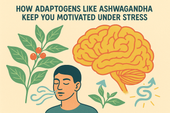
How Adaptogens Like Ashwagandha Keep You Motivated Under Stress
Feeling overwhelmed and unmotivated? 🌿 Discover how adaptogens like Ashwagandha can help you stay centered, focused, and energized under stress. Learn how supplements, breathwork, and therapy work together to restore your natural motivation and help you thrive — even during life’s toughest moments. 💪✨
-
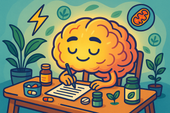
Supplements That Support Long-Term Productivity Without the Crash ⚡🌿
Cortisol — your body’s main stress hormone — can be both your best friend and worst enemy. ⚡ When balanced, it keeps you focused, energized, and ready to act. But when it stays high for too long, it leads to fatigue, anxiety, and emotional crashes. Learn how to regulate cortisol naturally through supplements, sleep, and stress management to maintain calm, steady productivity. 🌿
-
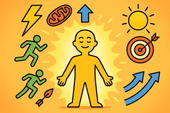
Why Energy Levels and Motivation Go Hand in Hand ⚡🧠
B-vitamins are the brain’s spark plugs 🔋. They turn food into fuel, support neurotransmitter production, and keep your mood, energy, and focus balanced. Learn how vitamins like B6, B9, and B12 work together to power the nervous system, reduce fatigue, and keep motivation high. 🌿
-
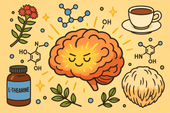
The Science of Motivation: Can Nootropics Help You Stay Focused? 🧠⚡
Nootropics are nature’s tools for sharper thinking and sustainable focus 🧠🌿. From Rhodiola and Lion’s Mane to L-theanine and Bacopa, these brain-boosting compounds enhance motivation, memory, and stress resilience. Learn the science behind how nootropics work — and how to use them safely for peak mental performance and clarity. ⚡
-
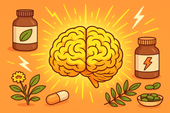
How Natural Supplements Can Boost Your Daily Drive
Cortisol is your body’s main stress hormone — powerful, necessary, but often misunderstood. ⚡ When balanced, it keeps you alert and energized; when chronically elevated, it drains mood, motivation, and focus. Learn how to regulate cortisol naturally through nutrition, supplements, and calming lifestyle habits for steady energy and emotional balance. 🌿
-
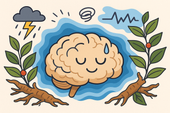
Ashwagandha for Stress and Low Mood
Breathwork is more than a relaxation tool — it’s a way to rewire your nervous system. 🌬️ Through intentional breathing, you can reduce stress hormones, improve focus, and calm emotional turbulence. This guide explores the science of breathwork and its powerful effects on mental clarity, resilience, and emotional regulation. 🌿
-
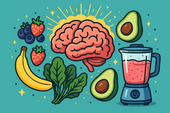
Mood-Boosting Smoothie Recipes
Your blood sugar affects far more than energy — it influences mood, focus, and emotional stability too 🍎. Learn how maintaining balanced glucose levels supports brain health, reduces anxiety, and prevents emotional crashes. Discover the foods and habits that keep your mind calm and your energy steady throughout the day. 🌿
-
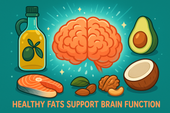
How Healthy Fats Support Brain Function
Your brain thrives on healthy fats 🧠💧. From omega-3s to MCTs, the right fats enhance focus, memory, and mood while protecting against inflammation and aging. This article explores how good fats — like those from olive oil, salmon, avocado, and nuts — build sharper thinking, emotional balance, and lasting brain vitality. 🌿
-
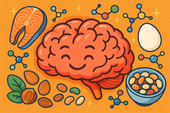
The Role of Protein in Mental Clarity
Protein isn’t just for muscles — it’s for your mind. 🧠 This guide explores how amino acids from high-quality protein fuel neurotransmitters, stabilize mood, and sharpen focus. Learn how balanced protein intake supports dopamine, serotonin, and energy regulation to boost mental clarity and emotional stability naturally. 🍳🌿
-
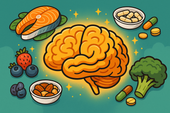
Nutrients That Support Emotional Stability
Your emotions are built from nutrients as much as from thoughts 🌿. This science-backed guide reveals the vitamins, minerals, and healthy fats that stabilize mood and reduce stress — from B-vitamins and magnesium to omega-3s and probiotics. Learn how balanced nutrition supports neurotransmitters, strengthens resilience, and promotes lasting calm and clarity 🧠✨.
-
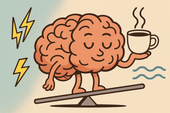
How Caffeine Affects Your Mood ☕
Your morning coffee might lift your spirits — but what’s really happening inside your brain? ☕ This in-depth guide explores how caffeine affects mood, motivation, dopamine, and stress. Learn how to enjoy caffeine mindfully without triggering anxiety, burnout, or emotional crashes. Discover the science behind your energy highs and lows — and how to find calm, sustainable focus. 🌿
-
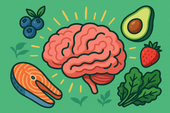
The Best Anti-Inflammatory Diet for Mental Health
Inflammation doesn’t just affect your body — it impacts your mood, focus, and emotional resilience too 🌿. This comprehensive guide reveals how an anti-inflammatory diet can support mental health by reducing neuroinflammation, balancing gut bacteria, and stabilizing blood sugar. Learn which foods to eat (and which to avoid) to protect your brain, boost serotonin, and promote lasting calm. 🧠✨
-

Why Sugar Spikes Can Worsen Depression
Sugar highs can make you feel good for a moment — but what comes next can fuel emotional crashes and deepen depression 🍭. This article explains how blood sugar spikes disrupt brain chemistry, increase inflammation, and destabilize serotonin. Learn how food, supplements, breathwork, and therapy can help you break the sugar–mood cycle and restore lasting emotional balance 🌿.
-
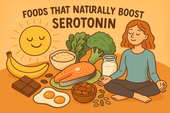
Foods That Naturally Boost Serotonin
Serotonin isn’t just a brain chemical — it’s your body’s built-in mood stabilizer 🌞. This in-depth guide explores how natural foods like salmon, eggs, bananas, and dark chocolate can elevate serotonin levels, while gut health, key nutrients, supplements, breathwork, and therapy create the perfect synergy for calm and emotional balance. Learn how to support your mind through diet, lifestyle, and mindset — naturally. 🌿
-
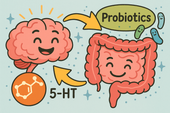
Probiotics for Mood Balance
-
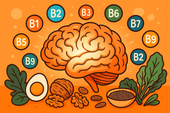
B-Vitamins and Their Role in Mental Health
Methylation is one of your body’s most important biochemical processes — influencing mood, energy, and focus. Powered by B-vitamins like B6, B9, and B12, it helps your brain create serotonin, detox efficiently, and maintain emotional balance. 🌿
-
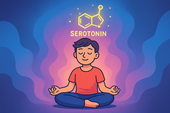
5-HTP for Serotonin Support
Calm isn’t just an emotion — it’s a physiological state where your body and mind finally sync in peace. By slowing your breath, softening your thoughts, and creating safety within, you restore the deep relaxation your nervous system craves. 🌿
-

St. John’s Wort for Mild Depression
Antidepressants can be life-changing for many — but understanding how they work and what natural options like St. John’s Wort can complement them is key. Learn how both approaches affect brain chemistry, mood balance, and long-term emotional wellness. 🌿
-

Rhodiola Rosea for Emotional Resilience
Neuroplasticity is your brain’s ability to grow, adapt, and heal — even after stress or trauma. Every thought, emotion, and habit reshapes your neural pathways, helping you build stronger emotional resilience, sharper focus, and lasting mental balance. 🌿
-

Ashwagandha for Stress and Low Mood
Adaptogens are nature’s stress balancers — powerful herbs like ashwagandha, rhodiola, and reishi that help your body adapt to tension, fatigue, and change. By regulating cortisol and supporting your nervous system, they build calm focus and emotional resilience from the inside out. 🌙
-

Magnesium’s Role in Emotional Regulation
Neuroscience helps us understand why we feel, think, and react the way we do. From brain chemistry and neural circuits to stress responses and emotional learning, the science of the brain reveals how our minds can heal, grow, and find balance. 🌿
-
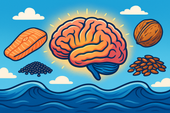
Omega-3 Fatty Acids and Emotional Well-Being
Nutrients aren’t just fuel — they’re communication signals that tell your brain and body how to function. From magnesium and vitamin D to omega-3s and B vitamins, the right mix of nutrients helps calm your mind, balance hormones, and support emotional and physical well-being. 🌙
-
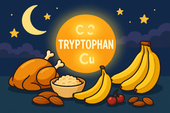
The Role of Tryptophan in Sleep Health
Mental health isn’t just the absence of illness — it’s the foundation of calm, focus, and emotional resilience. From managing stress and anxiety to nurturing self-compassion, understanding your mental well-being is the first step toward a balanced, more peaceful life. 🌿
-

Nutrients That Promote Nighttime Relaxation
Potassium does more than balance fluids — it also helps your body and mind relax at night. By calming nerves, reducing muscle tension, and supporting steady heart rhythm, potassium-rich foods like bananas, sweet potatoes, and coconut water can promote deeper, more restful sleep. 🌙
-

Sleep-Friendly Smoothie Recipes
Melatonin is your body’s natural sleep signal — a hormone that tells your brain when it’s time to rest. Learn how melatonin works, which foods and habits boost its production, and how to use it wisely for deeper, more restorative sleep without dependence. 💤
-
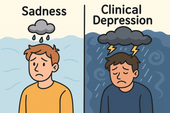
The Difference Between Sadness and Clinical Depression
Your emotions aren’t just in your mind — they’re written in your brain chemistry. Serotonin, dopamine, and GABA work together to regulate mood, motivation, and calm. When they fall out of balance, you may feel anxious, fatigued, or low. Learn how these brain chemicals influence your mental health and what you can do to restore harmony naturally. 🌿
-
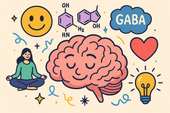
How Brain Chemistry Influences Mood
Your brain is a symphony of neurotransmitters — serotonin, dopamine, GABA, and more — working together to shape how you think and feel. When they’re balanced, you experience calm focus and emotional stability. When they’re not, mood swings and fatigue can follow. Learn how to naturally support these vital messengers for better mood and mental clarity. 🌿
-
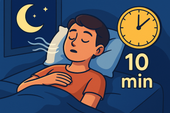
How to Fall Asleep in Under 10 Minutes
The military knows a few secrets about falling asleep fast — and they work even in chaos. This article explores the science behind rapid relaxation, including the famous “Military Sleep Method,” which teaches your body to shut down stress and rest on command. Learn how discipline, breath, and focus can help anyone fall asleep in minutes. 🌙
-
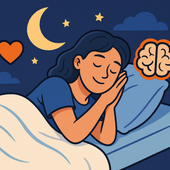
Why Emotional Resilience Improves Sleep
Emotional resilience isn’t just about mental strength—it’s also a key ingredient for better sleep. When your emotions are balanced, your body releases fewer stress hormones, your mind quiets faster, and your sleep becomes deeper and more restorative. Learn how to cultivate calm through mindset, breathwork, and daily habits. 🌙
-
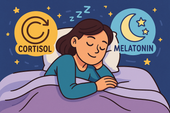
The Connection Between Stress Hormones and Sleep
Chronic stress can quietly reshape your body’s chemistry, raising cortisol, disrupting sleep, and draining your energy. This guide explores how long-term stress affects your nervous system, hormones, and rest—and how to restore calm through breathwork, nutrition, and daily recovery rituals. 🌿
-
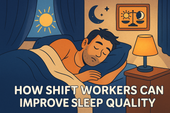
How Shift Workers Can Improve Sleep Quality
For shift workers, caffeine can be both a lifeline and a sleep disruptor. Learn how to use it strategically—boosting alertness during work hours without sabotaging rest. This guide explores timing, dosage, and smarter natural alternatives to keep your energy steady and your sleep restorative. 🌙
-
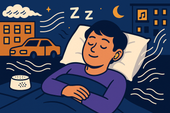
How to Sleep Better in a Noisy Environment
Living in a noisy area doesn’t mean sacrificing your rest. Learn practical and natural strategies to sleep better in loud environments—from using sound masking and breathwork to creating calming rituals that help your brain tune out the chaos. Find inner silence even when the world outside won’t quiet down. 🌙
-
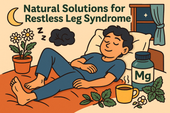
Natural Solutions for Restless Leg Syndrome (RLS)
Struggling to sleep deeply and wake refreshed? This soothing guide explores how the body restores itself during quality sleep—and how to support it naturally. Learn about the science of rest, the role of nutrients, and the rituals that promote deep, uninterrupted slumber. 🌙
-
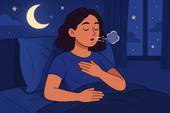
How to Overcome Middle-of-the-Night Anxiety
Middle-of-the-night anxiety can make even the calmest mind spiral into worry. This guide reveals practical, evidence-based techniques to help you stop the 3 A.M. overthinking loop—from breathwork and journaling to herbal supplements and therapy-based tools. Learn to retrain your nervous system and find peace when the world is asleep. 🌙
-

The Perfect Evening Herbal Blend
Discover the calming power of nature in your teacup. The perfect evening herbal blend combines chamomile, lemon balm, lavender, and adaptogens like ashwagandha to relax your body and quiet your mind before bed. Learn how to craft and customize a soothing, sleep-enhancing tea ritual that helps you unwind, restore, and wake up refreshed. 🌙
-

How to Cycle Sleep Supplements for Maximum Effectiveness
Wondering why your sleep supplements stop working after a while? This guide breaks down how to cycle sleep aids like melatonin, magnesium, and ashwagandha for consistent, long-term results. Learn when to rest your body, how to prevent tolerance, and what natural methods—like breathwork and therapy—enhance your sleep cycles. 🌙
-
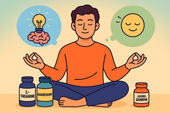
The Best Supplements for Both Relaxation and Focus
Calm your mind and sharpen your focus with the perfect blend of natural supplements. From L-theanine and magnesium to Rhodiola and Lion’s Mane, this science-based guide shows how to achieve relaxation and clarity at the same time. Discover stacks that support your nervous system, balance mood, and keep your mind laser-focused without the crash. 🌿
-

How to Sleep Better During Travel
Traveling can be thrilling—but sleepless nights can ruin even the best trips. From supplements like magnesium and melatonin to soothing breathwork and therapy-based techniques, this guide shows you how to sleep deeply on planes, in hotels, or across time zones. Learn to calm your body, reset your circadian rhythm, and build rest rituals that work anywhere in the world 🌙
-

Improving Sleep in Menopause with Supplements
Menopause can make peaceful sleep feel impossible — but balance is within reach 🌿. This article explores how supplements like magnesium, ashwagandha, and black cohosh can ease night sweats, calm the mind, and restore your natural sleep rhythm during hormonal changes.
-

Sleep Support for Students During Exams
Exam stress can make it hard to rest — but sleep is what helps you perform your best 💤. This article explains how to improve sleep quality during exams through better study habits, natural supplements, breathwork, and therapy tools to calm the mind and sharpen focus.
-

Rest Strategies for Entrepreneurs
Entrepreneurs often burn out chasing their vision — but rest is the real fuel for success 🌙. This article explores science-backed recovery strategies for founders, including sleep, breathwork, therapy, and nutrition techniques that sharpen creativity and sustain performance.
-

How Sleep Affects Athletic Recovery
Sleep is where strength is built. 💤 This article explores how deep sleep drives muscle recovery, hormonal balance, and athletic performance — plus how supplements like magnesium, melatonin, and ashwagandha can enhance overnight repair and boost training results.
-

Better Sleep for People with Chronic Pain
Living with chronic pain makes sleep feel impossible — but it’s not. 🌙 This article explores how pain disrupts rest and how to rebuild your sleep through gentle breathwork, calming nutrition, therapy, and supplements that help your body relax and heal.
-

How to Sleep Better During Seasonal Changes
Seasonal shifts can throw your sleep off balance 🌦️. This article explains how light, temperature, and hormones change with the seasons — and how to restore your rhythm naturally through melatonin-supportive foods, breathwork, and therapy for emotional balance.
-

Foods That Naturally Boost Melatonin
Want to fall asleep faster without supplements? 🌙 This article explores how foods like tart cherries, pistachios, and kiwi naturally boost melatonin, the hormone that regulates sleep. Learn how to build an evening meal plan — plus simple rituals like breathwork and herbal tea — to improve rest and reset your circadian rhythm.
-

The Role of Herbal Tea in Relaxation
Herbal tea is more than comfort in a cup 🍵 — it’s nature’s gentle way to calm the mind and relax the body. This article explores how teas like chamomile, lavender, and lemon balm support stress relief, sleep quality, and emotional balance — plus how to pair them with magnesium, breathwork, and mindful rituals for deeper peace.
-

Lavender Extract and Its Calming Effects
Lavender extract is one of nature’s most soothing remedies 🌸. This article explores how lavender calms the nervous system, lowers cortisol, and improves sleep — plus how to combine it with magnesium, breathwork, and therapy for deep relaxation and emotional balance.

















































